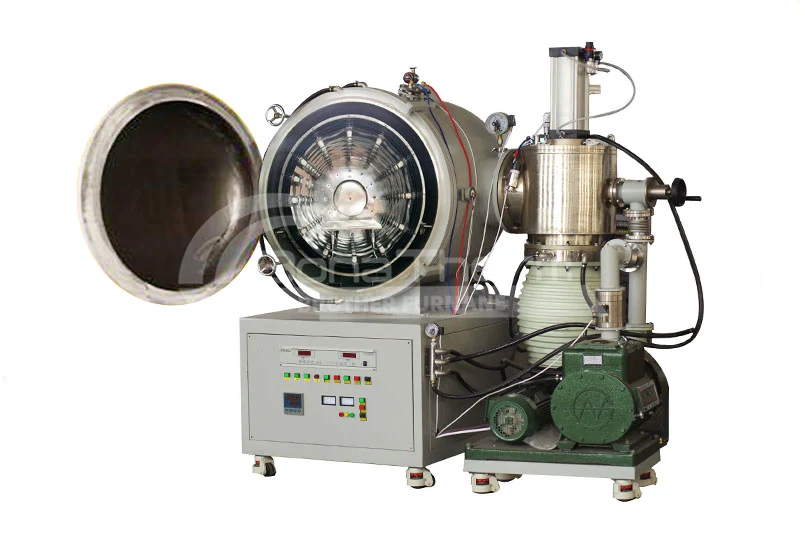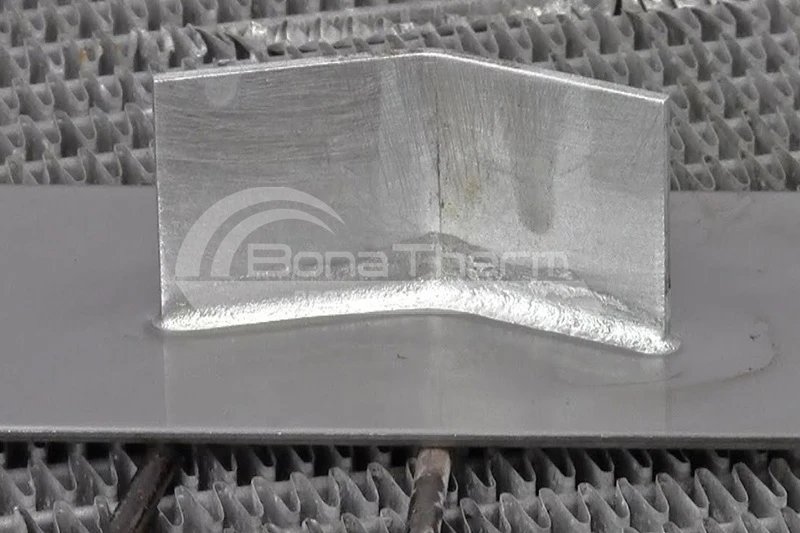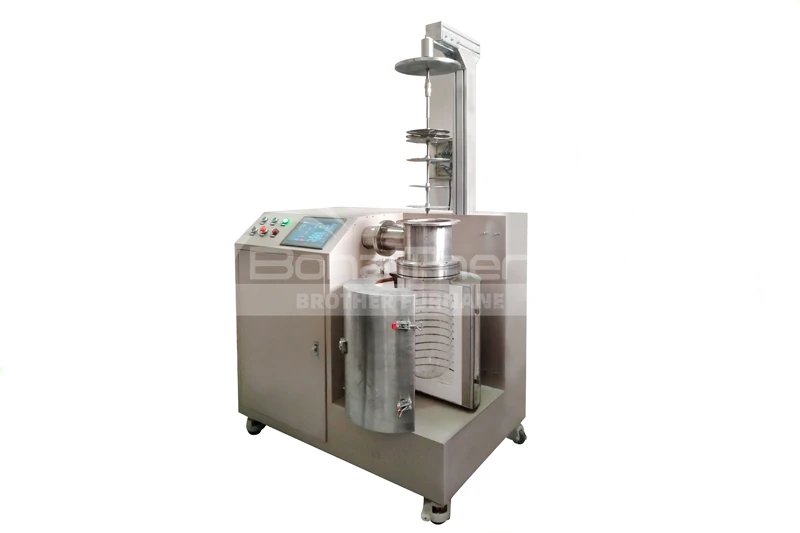What Kind of Furnace Can Be Used for Brazing Aluminium?
Brazing is a widely used process for joining metals, particularly when the
joint needs to withstand high mechanical stresses or must be airtight, as is
often the case in the manufacture of heat exchangers, radiators, and automotive
components.
Aluminum brazing, specifically, presents a set of challenges due to the metal’s unique properties, such as its high thermal conductivity and low melting point. When performed correctly, aluminum brazing can create strong, durable, and reliable joints. However, the process requires specialized equipment to ensure the quality of the final product.
One of the most critical pieces of equipment for aluminum brazing is the aluminum brazing furnace. This furnace plays a crucial role in controlling the temperature, atmosphere, and time needed to achieve optimal results.
Whether for fluxless brazing technology or vacuum aluminum brazing, the choice of furnace can significantly impact the final product’s quality. Therefore, understanding the different types of furnaces available, as well as their advantages and limitations, is essential for selecting the best equipment for your manufacturing needs.
In this article, Brother Furnace will explore the different types of furnaces
used in aluminum brazing, the benefits of each, and key factors to consider when
choosing the right furnace for your production environment.
Types of Furnaces Used in Aluminium Brazing
The furnace selected for aluminum brazing will depend on the scale of production, the type of parts being joined, and the specific characteristics of the brazing process. There are several types of furnaces used for aluminum brazing, each designed to meet different needs.
The most common types are vacuum furnaces, and batch-type furnaces. Each of these furnaces has unique features that make them suitable for specific types of aluminum brazing applications.
Vacuum Furnaces
Vacuum aluminum brazing is considered one of the most advanced methods for joining aluminum. It is typically used in high-precision applications where the joint must be clean and free from contamination. In a vacuum brazing furnace, a vacuum or low-pressure environment is created to minimize oxidation, which is a significant issue when brazing aluminum. In the absence of oxygen, the aluminum surface is not prone to oxidize, ensuring the strength and quality of the brazed joint.
The operation of a vacuum brazing furnace involves placing the parts inside a
sealed chamber, where air is evacuated to create a vacuum. The parts are then
heated to a predetermined temperature, causing the filler metal to melt and flow
into the joint. Once the joint is made, the chamber is cooled, and the brazed
parts are removed. The process prevents any contaminants from entering the
furnace, which is critical when working with materials that need to maintain
their strength and integrity.
Benefits of Vacuum Furnaces:
● Prevention of oxidation and contamination: The vacuum environment is perfect for ensuring that the aluminum remains free from oxidation and contaminants, which is essential for achieving high-quality joints.
● Environmentally friendly process: Since vacuum brazing does not require flux, it is a more environmentally friendly option compared to traditional brazing methods.
● Uniform heating and temperature control: A vacuum furnace ensures precise temperature control, which is crucial for precision aluminum brazing. The uniform heat distribution improves the overall consistency of the brazing process, ensuring the quality of each joint.
Batch-Type Furnaces
For medium- to small-scale production, batch-type brazing furnaces are often the go-to solution. These furnaces are designed to handle a wide variety of part sizes and geometries. They operate in batches, with multiple parts placed into the furnace at once. This flexibility makes them ideal for businesses that require versatility in their brazing operations.
A batch-type brazing furnace can use either controlled atmosphere brazing
(CAB) or fluxless brazing technology. In CAB, the furnace atmosphere is
controlled and typically consists of a mixture of gases like nitrogen or
hydrogen, which prevents oxidation during the heating process. Fluxless brazing
is a more advanced technique that eliminates the need for flux, reducing
post-brazing cleaning and minimizing environmental impact.
Batch-type furnaces are available in horizontal and vertical loading options. Horizontal furnaces are ideal for flat parts or thin components, while vertical loading is better for larger, bulkier components that need to be positioned upright during brazing.
Benefits of Batch-Type Furnaces:
● Flexibility for different part sizes: The batch-loading design allows for various parts to be brazed at once, providing the flexibility to handle a range of part sizes and shapes.
● Cost-effectiveness: For smaller production runs, batch-type furnaces offer a more affordable solution compared to larger systems, making them ideal for businesses with moderate brazing needs.
● Improved quality with controlled atmospheres: The controlled atmosphere brazing (CAB) process helps maintain part cleanliness and improves the quality of the brazed joint.
Advantages of Using Specific Furnaces
When choosing a furnace for aluminum brazing, it's essential to understand the unique advantages each type offers. Selecting the right furnace depends on your production needs, part size, and desired quality.
Benefits of Vacuum Furnaces
Vacuum aluminum brazing is particularly beneficial when high-quality, clean,
and oxidation-free joints are required. The primary benefits include:
● Prevention of oxidation and contamination: The vacuum environment eliminates the risk of oxidation, ensuring the integrity of the aluminum parts.
● Uniform temperature control: Vacuum furnaces provide excellent temperature uniformity, which is essential for precision aluminum brazing.
● Environmentally friendly: Since no flux is required in the vacuum brazing process, it is considered more eco-friendly compared to traditional brazing methods.
Benefits of Batch-Type Furnaces
Batch-type furnaces offer several advantages for smaller production runs:
● Flexibility for different part sizes: The ability to adjust loading configurations makes batch-type furnaces ideal for a wide variety of parts.
● Cost-effective for small runs: For businesses that don't need high-volume production, batch-type furnaces are a more affordable solution.
Key Considerations When Choosing a Furnace
When selecting the appropriate aluminum brazing furnace, several factors need to be taken into account, including:
● Part weight, material, and geometry: The type of parts being brazed will affect the furnace selection. Larger, heavier parts may require a batch-type or continuous furnace, while smaller, intricate components may be better suited to a vacuum furnace.
● Production volume: High-volume operations benefit from continuous furnaces,
while low-to-medium-volume production can be handled with batch-type
furnaces.
● Control of contaminants: The need for an uncontaminated brazing environment should guide the choice. Vacuum furnaces offer superior control of contaminants compared to other options.
● Operational costs: Consider the costs of operation, including energy usage, maintenance, and labor.
Conclusion
In conclusion, the choice of the aluminum brazing furnace depends on several factors, including production volume, part geometry, and the specific needs of the brazing process. Vacuum furnaces, batch-type furnaces, and continuous furnaces each have their advantages, making it essential to carefully evaluate your production needs before making a decision.
Brother Furnace specializes in manufacturing high-quality industrial brazing equipment designed to meet the diverse needs of different industries. Whether you require fluxless brazing technology, vacuum aluminum brazing, or automated brazing systems, Brother Furnace could offer solutions that ensure high performance and cost-effectiveness in your brazing processes.
Contact us to learn more about our vacuum heat treatment furnaces and to discover how Brother Furnace can help streamline your production line and enhance your product quality.











